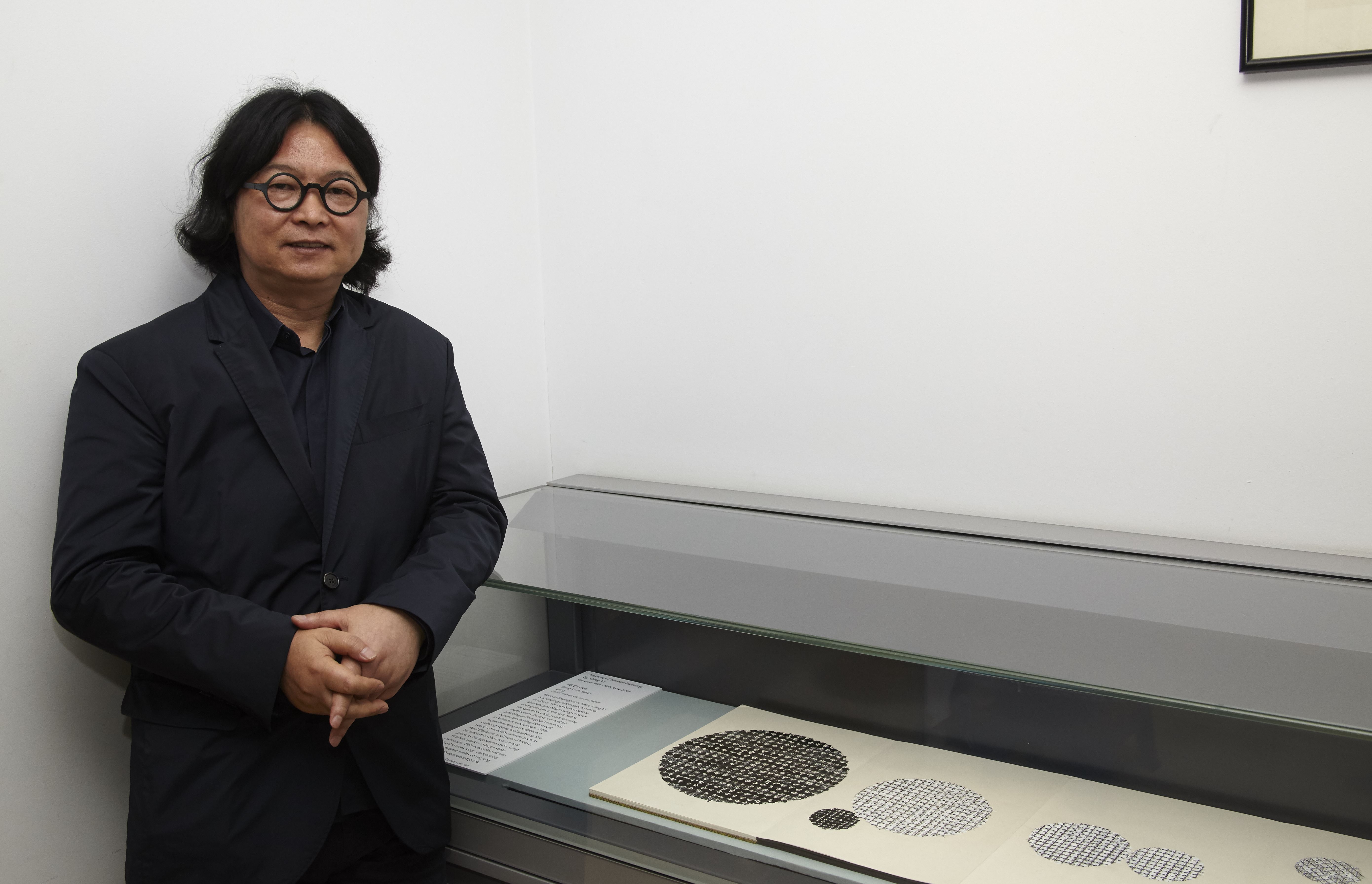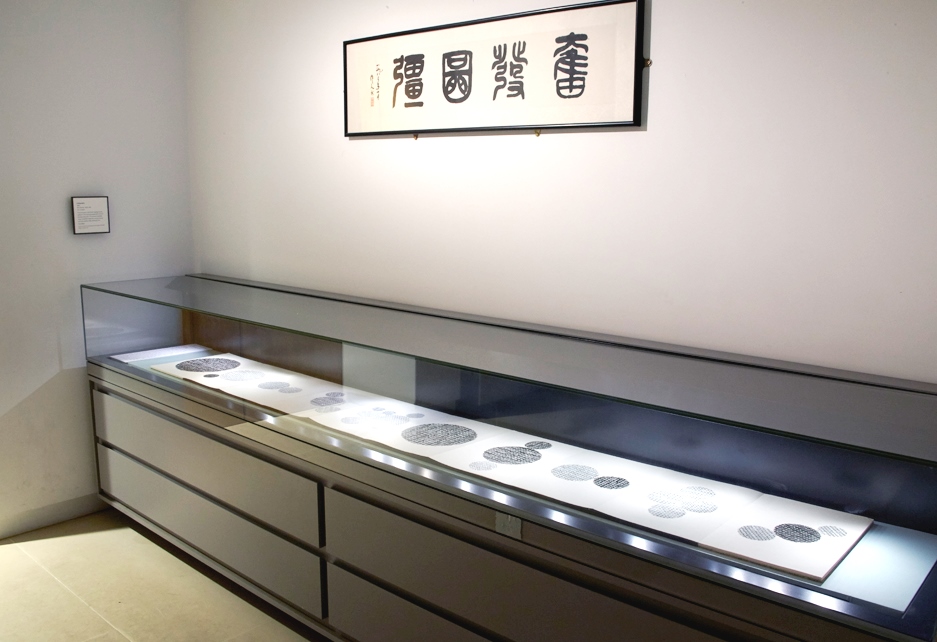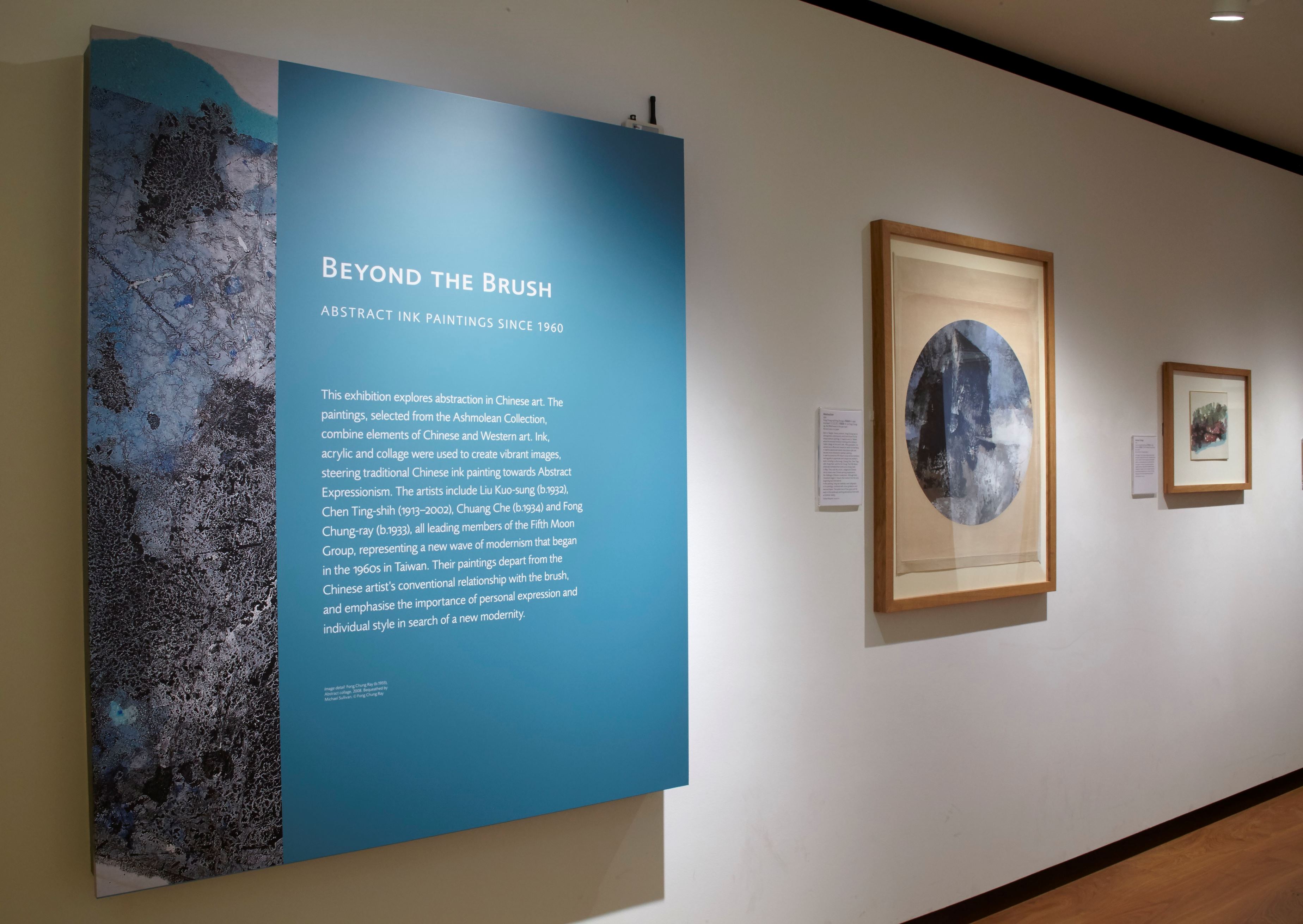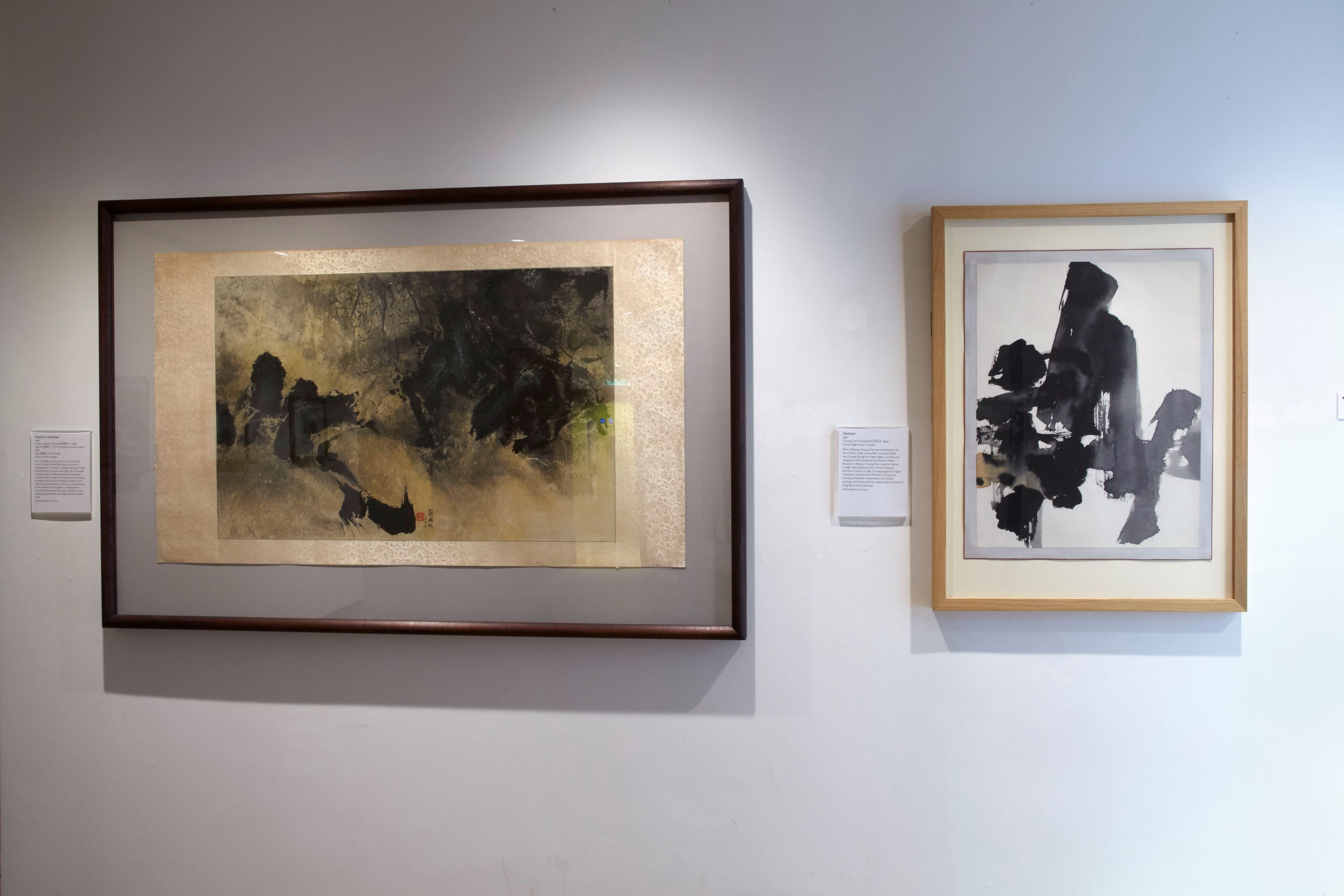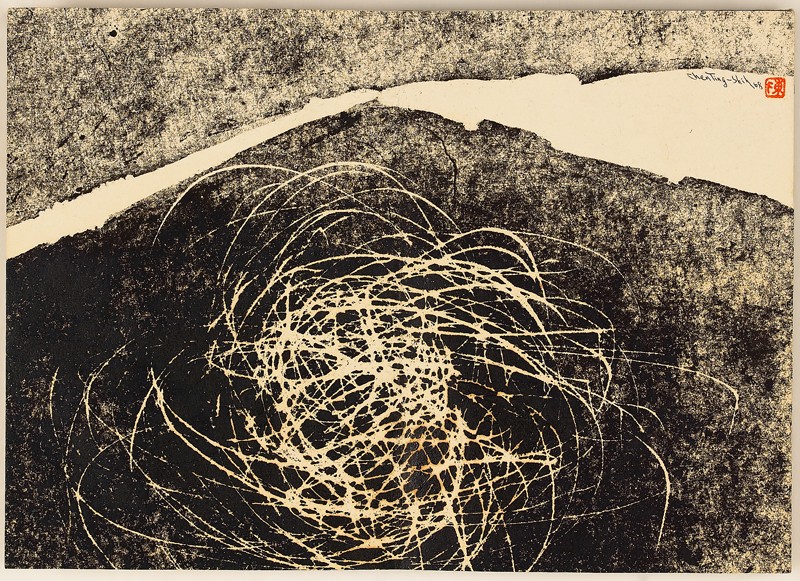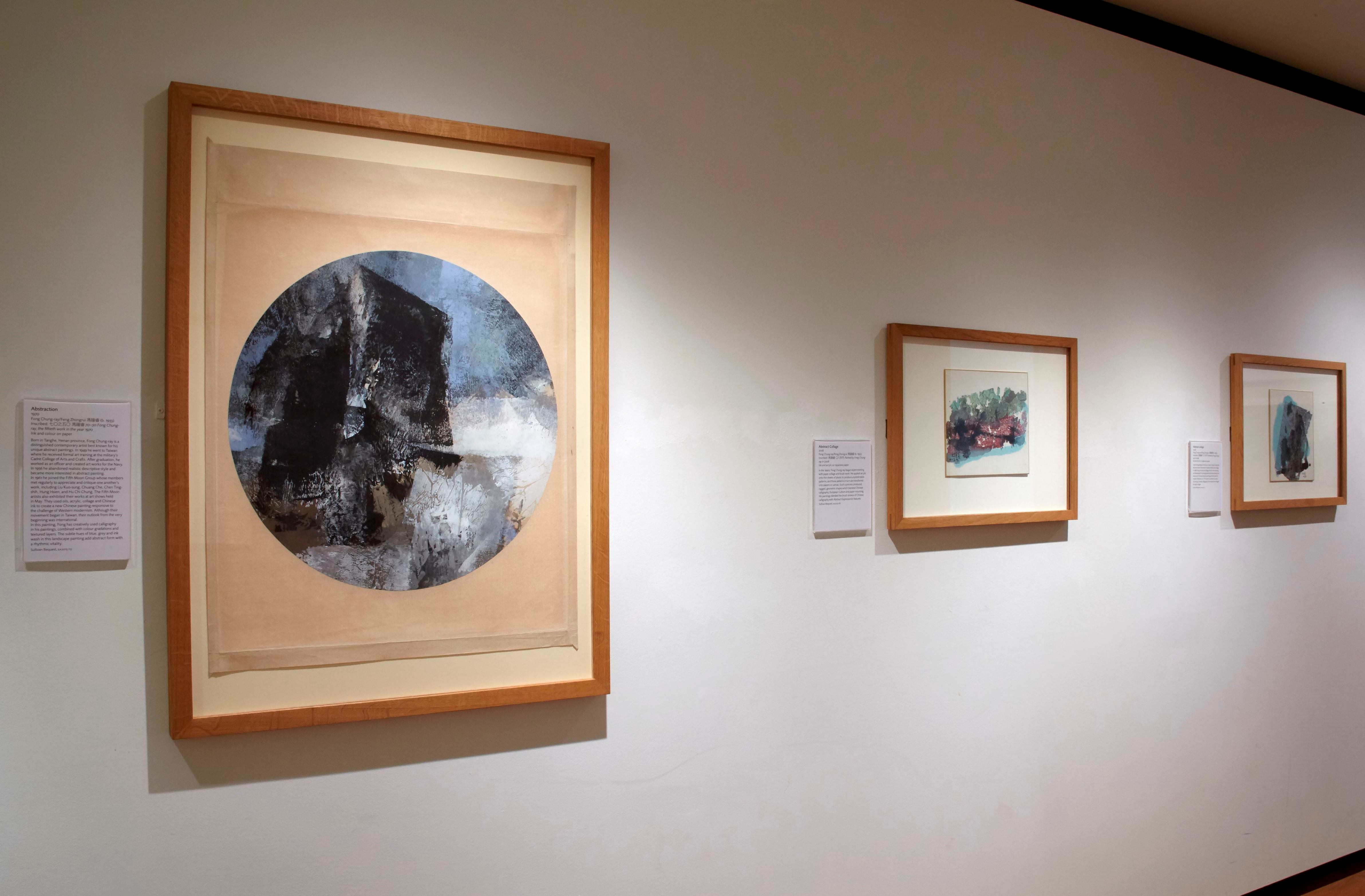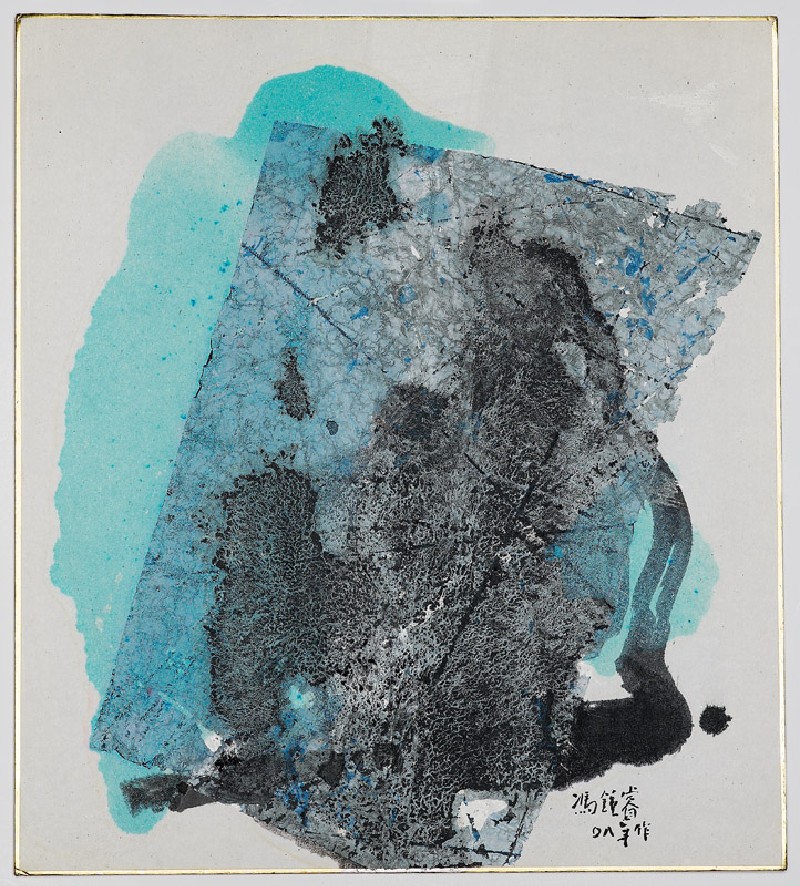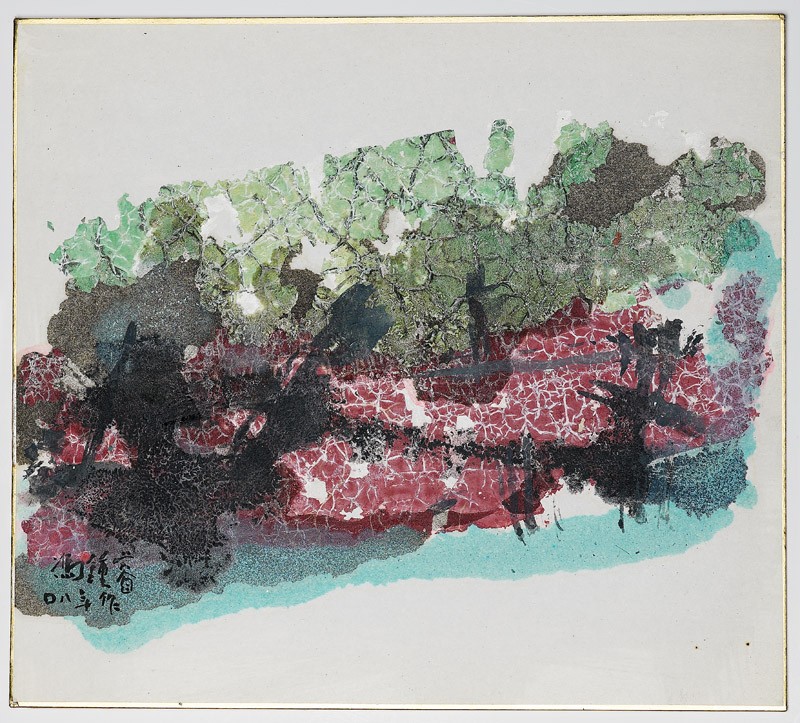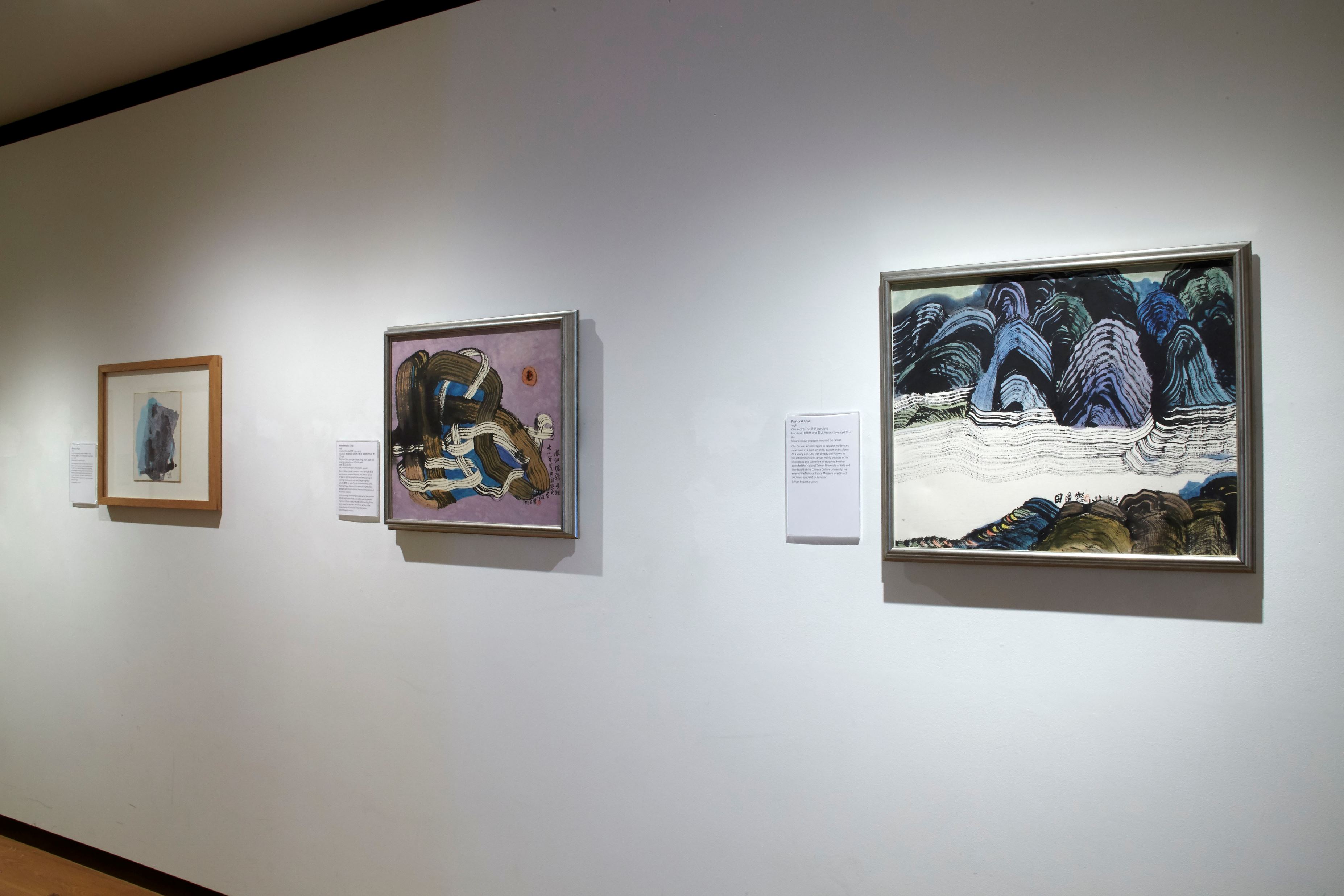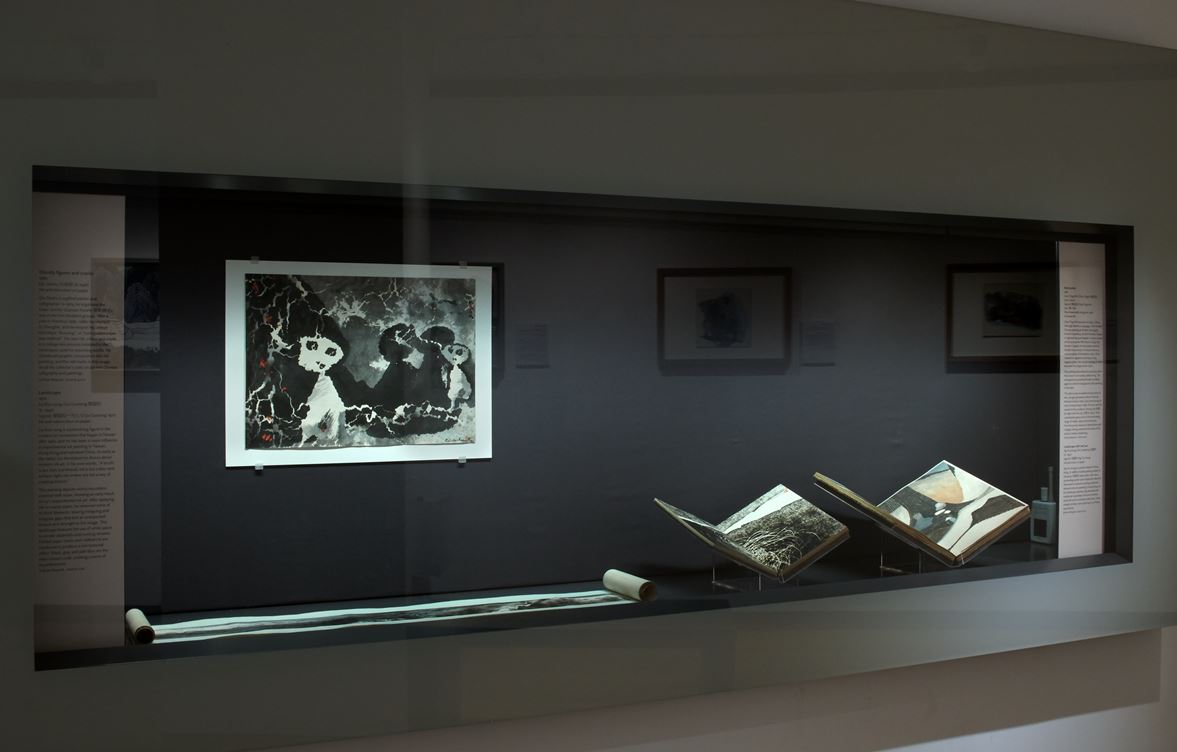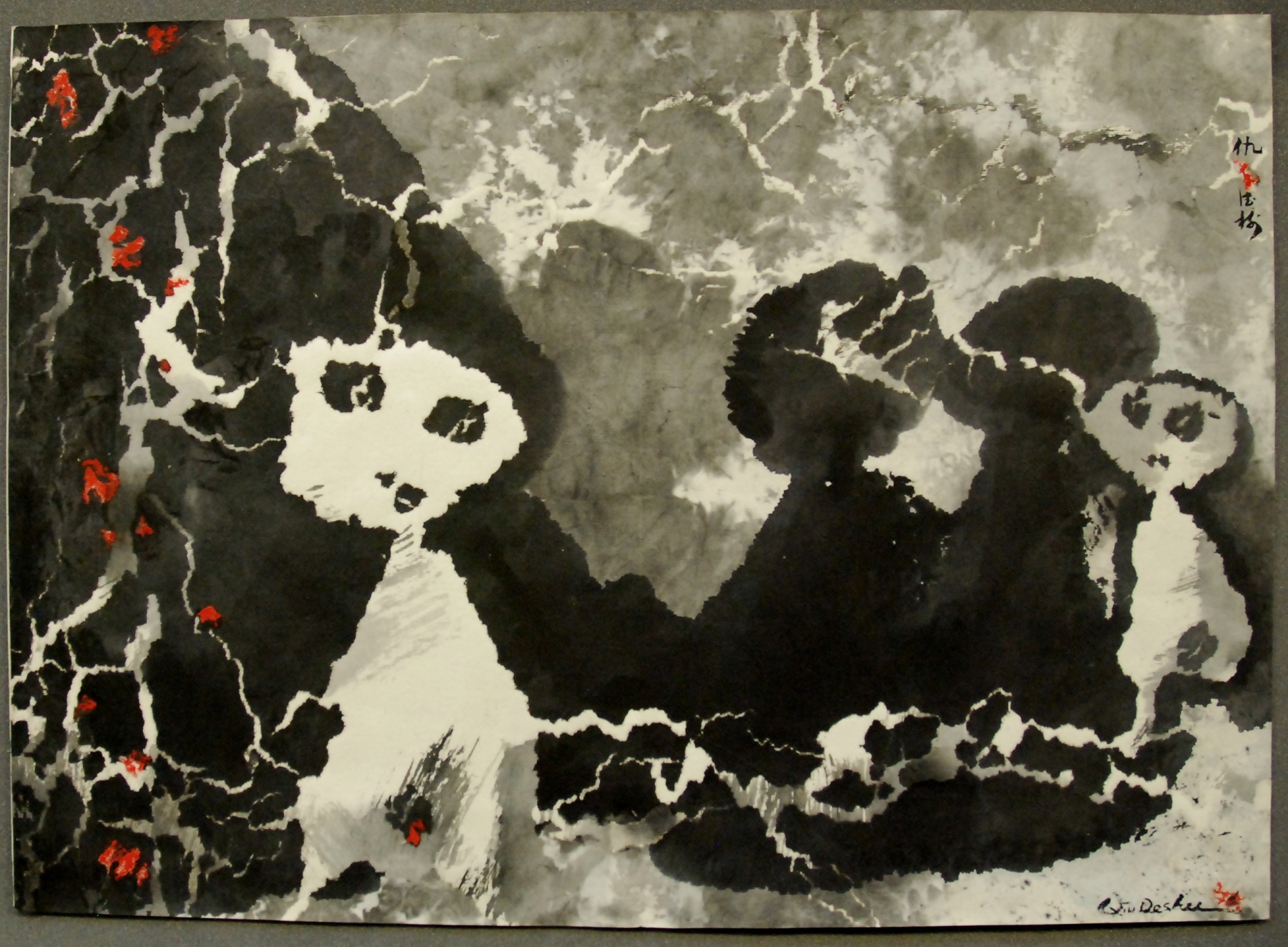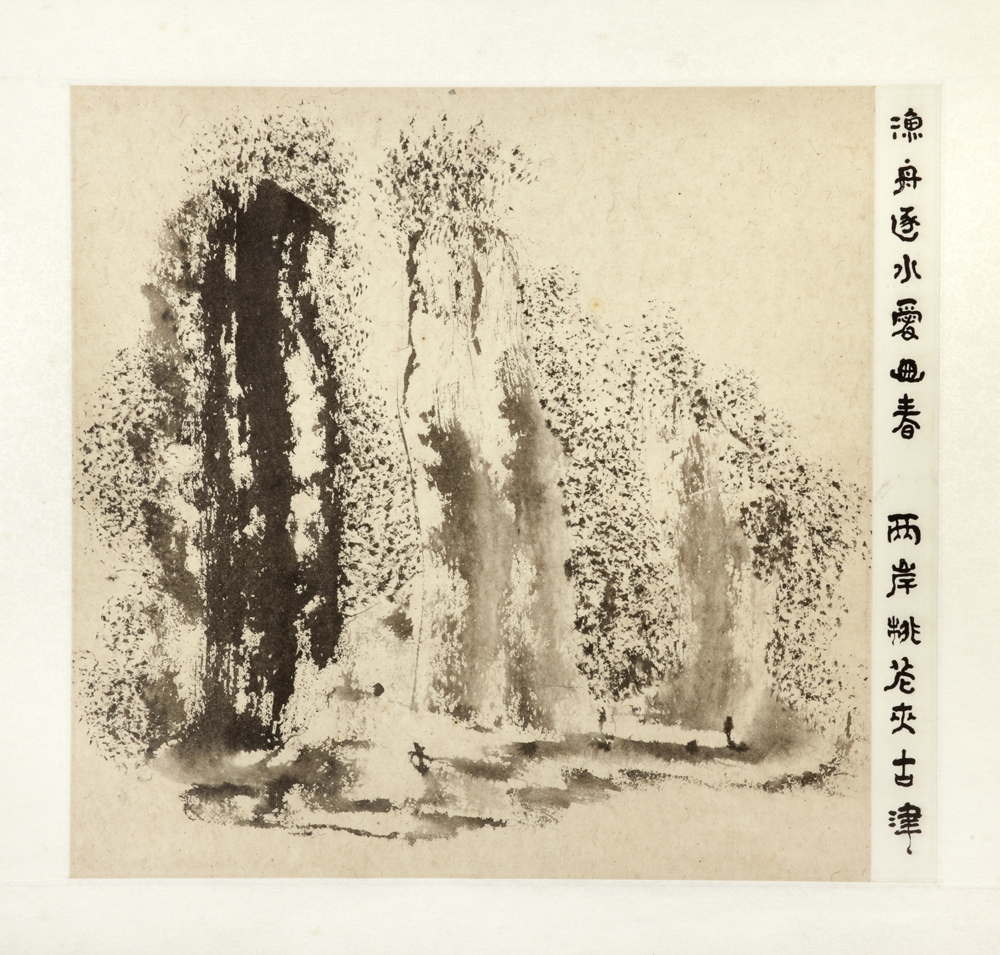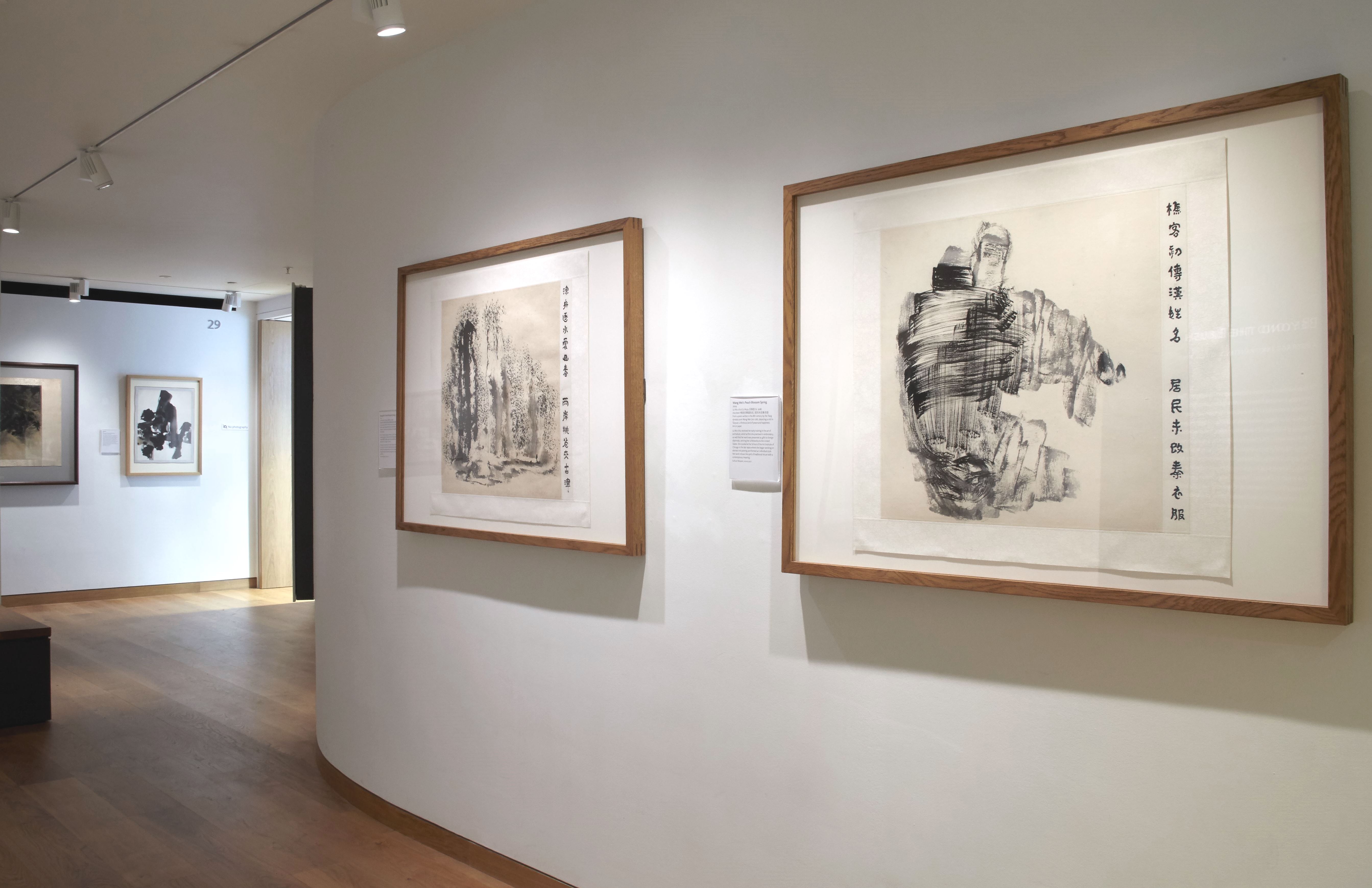15 November 2016 to 26 March 2017
Gallery 29 | Admission Free
Mount Fuji, an active volcano and Japan’s highest mountain, has long been praised by poets and depicted by artists for its beautiful shape and sacred status. In the mid-1800s, the great landscape print designer Utagawa Hiroshige (1797–1858) produced numerous views of Mount Fuji in different seasons and weather conditions. These were probably inspired by his contemporary Hokusai, whose ground-breaking series ‘Thirty-six Views of Mount Fuji’ was hugely successful in the 1830s.
A special exhibition in the Ashmolean’s Eastern Art Prints and Paintings Gallery (Gallery 29) shows a selection of Hiroshige’s views of Mount Fuji, drawn from the Ashmolean’s own collection. The exhibition includes views of Mount Fuji from several different Hiroshige series, some devoted entirely to Fuji and others in which Fuji appears in views of Edo, or seen from the Tōkaidō Road, Japan’s major highway. It is the second in a series of displays highlighting the Ashmolean’s collection of Hiroshige landscape prints.
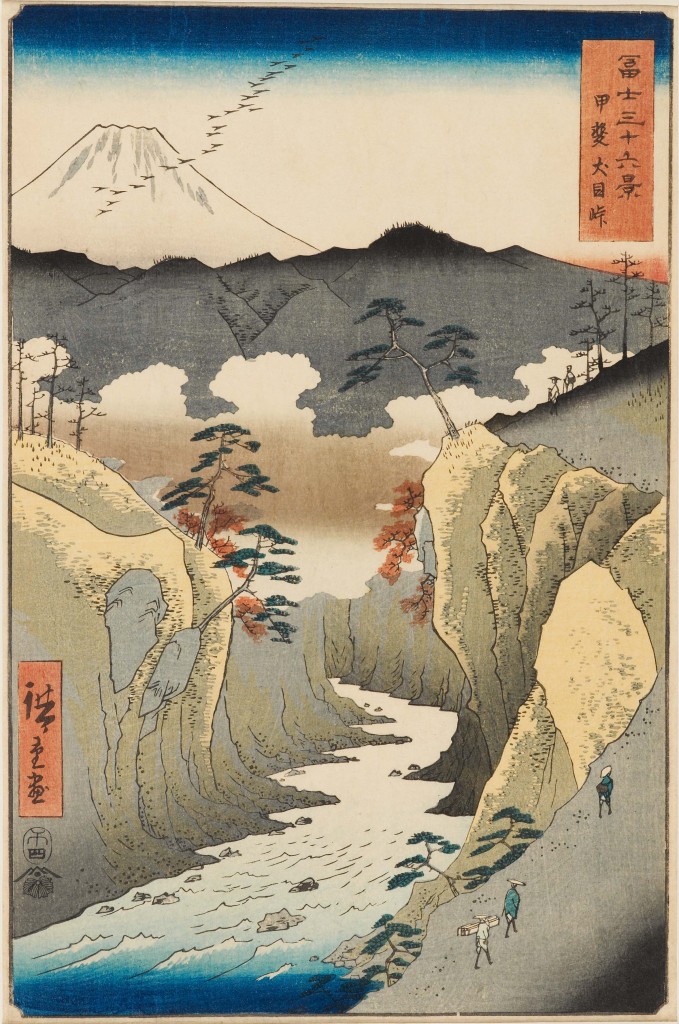
Inume Pass in Kai Province (Kai Inume tōge 甲斐犬目峠)
Thirty-six Views of Mount Fuji
Date: 1858
Colour woodblock print
Presented by Mrs Allan and Mr and Mrs H. N. Spalding, EAX.4389
© Ashmolean Museum, University of Oxford
Travellers walk along the edge of Inume Pass on a chilly autumn day. A flock of geese flies in front of Mount Fuji, adding to the melancholy autumnal atmosphere. Hiroshige is known to have travelled to this area in the spring of 1841 and in his diary he described its awe-inspiring beauty. Hiroshige absorbed a wide range of artistic influences, evident in this work: the fluffy clouds in the ravine and the shading on Mount Fuji are probably influenced by Western copper-plate prints, but the dots on the craggy rocks are more reminiscent of Chinese ink painting.
By Hiroshige’s time, the Japanese print industry was booming and ukiyo-e woodblock prints depicting the lively popular culture of the urban pleasure districts could be purchased for the price of a large bowl of noodles. However, the landscape print was a new genre, pioneered by Hiroshige’s contemporary Katsushika Hokusai (1760-1849). Hiroshige’s own breakthrough came with the publication of his series ‘Fifty-three Stations of the Tōkaidō’, which appeared between 1832 and 1834 and depicted scenes at the fifty-three post stations along Japan’s major highway. In his work Hiroshige captured quite brilliantly the effects of season, weather and time of day. He took full advantage of recent technical developments in his work, in particular the introduction of a new Western pigment known as Berlin or Prussian blue, which became commercially viable in Japan from the mid-1820s. The brilliantly coloured Prussian blue gave artists much greater freedom of expression in the depiction of sky and water. The new blue was particularly effective when it was applied using a method of sophisticated colour gradation known as bokashi, in which printers wiped and diluted the amount of pigment applied to the woodblock. The success of Hiroshige’s designs depended largely on the skilful use of bokashi colour gradation to enhance the mood of rainfall, mist or snow.
The ‘Fifty-three Stations of the Tōkaidō’ was so successful that Hiroshige continued to produce series of landscape prints of well-known locations for the rest of his life. His final series of prints was the ‘Thirty-Six Views of Mount Fuji’ (Fuji Sanjū-rokkei 富士三十六景), produced for the publisher Kichizō (Kōeidō) from around 1858 to 1859. It was made in conjunction with Hiroshige’s pupil, Hiroshige II, and indeed was probably finished by him after Hiroshige’s death in 1858.
The subject of Mount Fuji, shown in different seasons and weather conditions from a variety of different places and distances, had already been made popular by Katsushika Hokusai in his famous series of 1830–1833, the ‘Thirty-Six Views of Mount Fuji’ (Fugaku sanjū-rokkei) and later in his book One Hundred Views of Mount Fuji (Fugaku hyakkei). Hokusai himself was probably influenced by an earlier illustrated book entitled One Hundred Fujis (Hyaku Fuji), written by Kawamura Minsetsu in 1767. The notion of a set of 36 was a traditional format, referring back to the group of 36 revered poets selected in the early twelfth century as models of Japanese poetic ability.
Hiroshige had himself already produced a version of the 36 views of Fuji in small horizontal format at the end of 1852, and Mount Fuji also featured in many of his views of Edo and views along the Tōkaidō. However, this final series devoted entirely to the sacred mountain was designed in vertical format. This allowed him to show off the bold compositional skills he had developed in the 1850s, in particular his fondness for balancing foreground elements with landscape backgrounds.
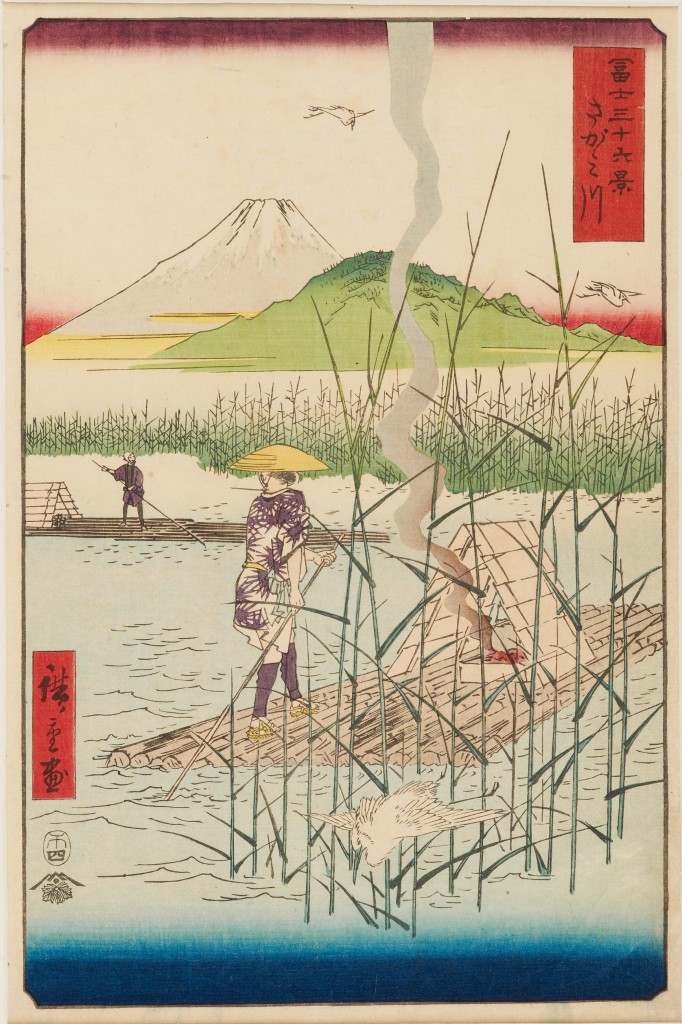
The Sagami River (Sagamigawa さがみ川)
Series: Thirty-Six Views of Mount Fuji
Date: 1858
Colour woodblock print
Presented by Mrs Allan and Mr and Mrs H. N. Spalding, 1952 EAX.4384
© Ashmolean Museum, University of Oxford
This print is unusual within this particular series for its focus on human activities, as two men punt log-rafts along the river. Hiroshige has layered multiple visual planes in this composition, starting with the egret and reeds at the front, and ending with Fuji at the back. This device creates a sense of depth in the composition without resorting to Western linear perspective. The column of smoke from the fire divides the print vertically and the unexpected colours evoke a bright spring morning. This print was famously included in the background of van Gogh’s 1887 oil portrait of Père Tanguy.
Mount Fuji, an active volcano that last erupted in 1707, is the highest mountain in Japan at 3776m. It has long been praised by poets and depicted by artists for its beautiful shape and sacred status. In June 2013, it was designated a UNESCO World Heritage cultural site in recognition of the way in which it has ‘inspired artists and poets and been the object of pilgrimage for centuries’. Fuji is located just 70 miles from Hiroshige’s hometown of Edo (modern-day Tokyo) and on a clear day can be seen from many points in the city. It was also visible from many parts of the Tōkaidō Road that linked Edo with the ancient capital of Kyoto.
Mountains have traditionally been considered sacred in Japan, thought of as homes to spirits and gods, and by the seventh century Mount Fuji was being worshipped by wandering ascetic monks who climbed the mountain as a form of worship. By the early 1600s a Fuji cult, known as Fuji Shinkō, had developed in Edo. The Fuji Shinkō, which combined elements of Buddhist and Shinto belief, believed that Fuji protected Edo and the prosperity of the whole country, and established organizations of Fuji worshippers to provide rituals, prayers and pilgrimage practices for their members. These Fujikō groups, as they were called, were also responsible for the construction of a number of artificial Fuji-shaped hills in parks throughout Edo. These ‘mini-Fujis’ allowed citizens unable to travel to the actual mountain the chance to make substitute pilgrimages, or simply to enjoy them as a kind of theme park. There were ten of these replicas in Edo in Hiroshige’s day and he depicted them in several of his prints. Many purchasers of printed views of Fuji may have belonged to branches of these Fuji associations, which had around 70,000 members in Edo in Hiroshige’s day. One branch was led by a leading publisher of the early nineteenth century, Nishimuraya Yohachi (Eijudō), who produced several of Hiroshige’s print series (although not this one).
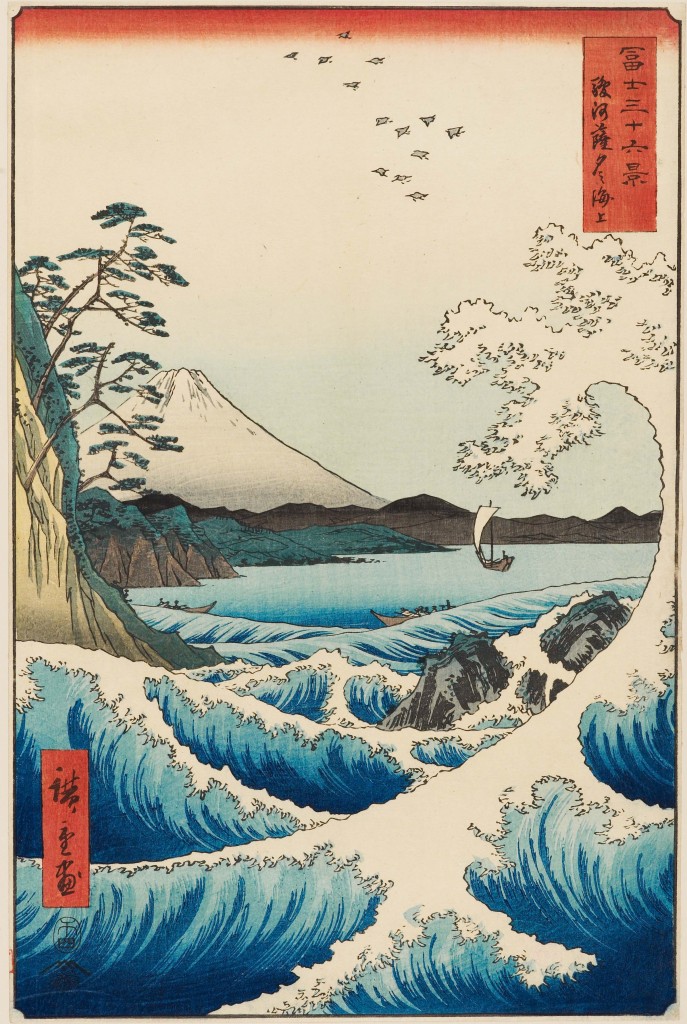
The Sea at Satta in Suruga Province (Suruga Satta kaijō 駿河薩多海上)
Series: Thirty-six Views of Mount Fuji
Date: 1858
Colour woodblock print
Presented by Mrs Allan and Mr and Mrs H. N. Spalding, EAX.4387
© Ashmolean Museum, University of Oxford
Here Mount Fuji is framed by a giant curling wave in the foreground. The design recalls Hokusai’s famous depiction of Fuji, commonly known as ‘The Great Wave’. Hiroshige’s version is calmer and more detached. The water has been printed with great sophistication, with three different shades of blue contrasting with the white wave crests, which in turn harmonize with the white peak of Mount Fuji in the background. The marks of the baren printing tool are clearly visible on the slopes of the mountain.
